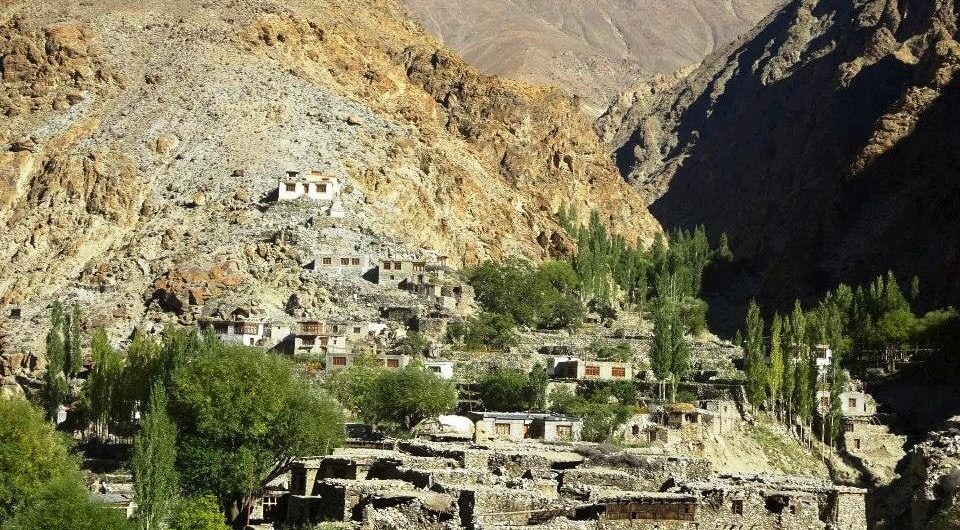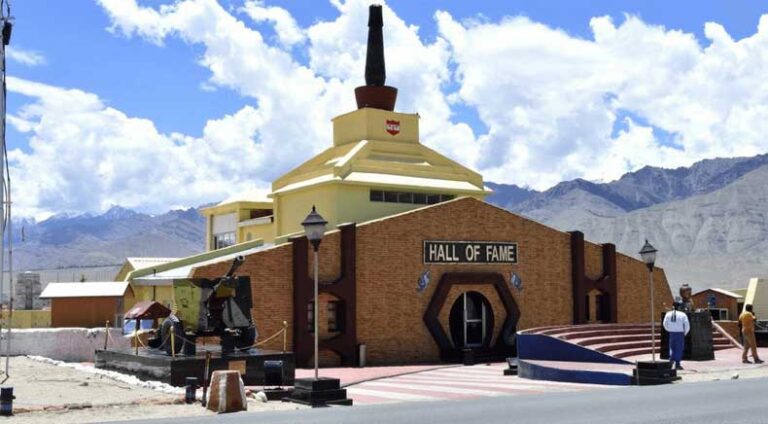The villages of Dah and Hanu are situated around 163 kilometers apart in the direction of Leh. The path through the village of Dah and Hanu is a lovely one. To enter Dah and Hanu village, permission is needed, which is simple to obtain from Leh. Due to their location within the Leh district, visiting Dah and Hanu villages requires an Inner Line Permit (ILP) from the District Commissioner, Leh. They are near the LOC’s Batalik sector (Line of Control). The Kargil-Batalik road is not directly adjacent to these two villages. For individuals who value cultural diversity, Dah & Hanu Villages should be on your travel itinerary, stay with us at our heritage hotel in Ladakh and enjoy all there is that Ladakh can offer. The distinctive headwear used by the local tribes is well known.
This cultural group is said to be the last of the Aryans to be confined to the valley. They have preserved their racial purity over the generations and their origins are pure Indo-Aryan. The Aryans of Ladakh are described as tall (up to 6′- 6′′), well-defined, with big eyes, and a balanced build. In any case, they appear to be extremely similar to the old per-Buddhist religion known as Bon – Chos as far as their manner of life and religious practices are concerned. They are fiercely self-aware and naturally introverted to share their feelings.

The lifestyle of the Aryans
The main field of employment here is farming and agriculture. They raise enormous numbers of goats, along with cows, lambs, and yaks as livestock in addition to cultivating apricots. Wheat produced from yak milk is a staple food of the Aryan people. The younger generation has relocated to larger towns in quest of better jobs and education while the older generation continues to live in this community. They all work for the nearby Indian army, which is located close to their village. Although modernization has not diminished their pride in their ancestry. One can still clearly see that in them even today in their appearance, actions, and even their friendly hospitality.
Best Time to visit
The ideal time to visit the village is between June and October.
The climate and atmosphere are unbearably hot throughout the summer, reaching temperatures of 40 degrees Celsius.
Places To Explore In Dah and Hanu Ladakh
While heading to Dah & Hanu Village, one can stop at several interesting locations. A few of these locations are,
-Hall of Fame
-Shanti Stupa
-The Lamayuru Monastery
-Shey Palace
-Kargil City View Point
-Spituk Gompa
-Shakar Fort
-Leh Market
Food at Dah and Hanu Village
There aren’t many eating options here. Since the community has no distinctive cuisine or characteristics, there is no selection of food. There are no restaurants in the area except for the tribal cuisine. Therefore, if you wish to explore the area for a greater number of days, you must make personal arrangements or bring extra food.
Festivities in Dah & Hanu Village
The original cultures of Dah and Hanu village were Aryans who revered stone. But they adopted Buddhism over time. The Bononah festival is one of the most well-known holidays observed here. Here, the Aryans celebrate the harvest by dressing up elaborately as gods or deities. It lasts for up to three days in September, when a goat is killed and hymns are sung to the accompaniment of specific dances performed by the locals.
Language in Dah and Hanu Village
The Brokskad language, which is highly distinct from Ladakhi, is spoken by the locals of Dah village. The people of Hanu village, however, speak Ladakhi.
Featured image credits: tripoto.com

